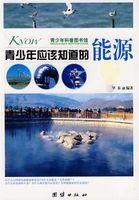They pitched their camp at Kitty Hawk in October, 1900, and made a brief and successful trial of their gliding machine.Next year, they returned with a much larger machine; and in 1902 they continued their experiments with a model still further improved from their first design.Having tested their theories and become convinced that they were definitely on the right track, they were no longer satisfied merely to glide.They set about constructing a power machine.Here a new problem met them.They had decided on two screw propellers rotating in opposite directions on the principle of wings in flight; but the proper diameter, pitch, and area of blade were not easily arrived at.
On December 17, 1903, the first Wright biplane was ready to navigate the air and made four brief successful flights.
Subsequent flights in 1904 demonstrated that the problem of equilibrium had not been fully solved; but the experiments of 1905 banished this difficulty.
The responsibility which the Wrights placed upon the aviator for maintaining his equilibrium, and the tailless design of their machine, caused much headshaking among foreign flying men when Wilbur Wright appeared at the great aviation meet in France in 1908.But he won the Michelin Prize of eight hundred pounds by beating previous records for speed and for the time which any machine had remained in the air.He gave exhibitions also in Germany and Italy and instructed Italian army officers in the flying of Wright machines.At this time Orville was giving similar demonstrations in America.Transverse control, the warping device invented by the Wright brothers for the preservation of lateral balance and for artificial inclination in making turns, has been employed in a similar or modified form in most airplanes since constructed.
There was no "mine" or "thine" in the diction of the Wright brothers; only "we" and "ours." They were joint inventors; they shared their fame equally and all their honors and prizes also until the death of Wilbur in 1912.They were the first inventors to make the ancient dream of flying man a reality and to demonstrate that reality to the practical world.
When the NC flying boats of the United States navy lined up at Trepassey in May, 1919, for their Atlantic venture, and the press was full of pictures of them, how many hasty readers, eager only for news of the start, stopped to think what the initials NCstood for?
The seaplane is the chief contribution of Glenn Hammond Curtiss to aviation, and the Navy Curtiss Number Four, which made the first transatlantic flight in history, was designed by him.The spirit of cooperation, expressed in pooling ideas and fame, which the Wright brothers exemplified, is seen again in the association of Curtiss with the navy during the war.NC is a fraternity badge signifying equal honors.
Curtiss, in 1900, was--like the Wrights--the owner of a small bicycle shop.It was at Hammondsport, New York.He was an enthusiastic cyclist, and speed was a mania with him.He evolved a motor cycle with which he broke all records for speed over the ground.He started a factory and achieved a reputation for excellent motors.He designed and made the engine for the dirigible of Captain Thomas S.Baldwin; and for the first United States army dirigible in 1905.












